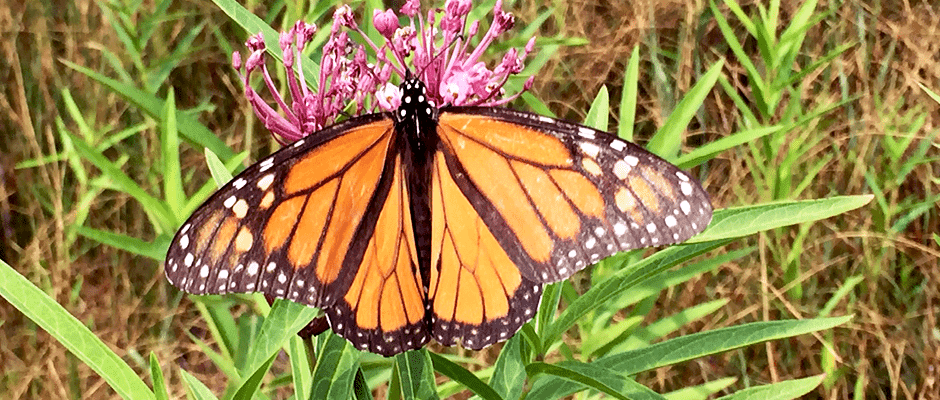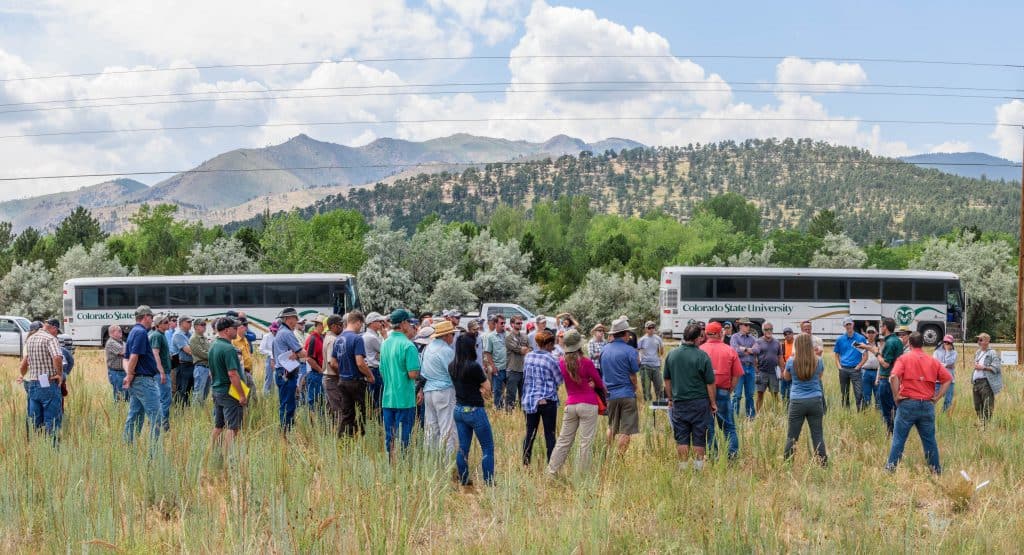Share this article
The return of monarch butterflies: Protection and restoration of milkweed habitat
Monarch butterflies (Danaus plexippus) are one of the most iconic butterflies found in the U.S. These spectacular insects are fascinating in many ways, particularly with regard to their migratory patterns; certain populations of monarch butterflies will migrate thousands of miles to their overwintering grounds in California or Mexico.
Unfortunately, total populations have decreased by approximately 90 percent over the past two decades, with one potential cause of decline being loss of habitat, especially milkweed upon which monarch caterpillars feed.
In the U.S., establishment of quality pollinator habitat is at the forefront of restoration objectives. It is critical for all organizations and agencies to work together to improve habitat for the monarch butterfly and other pollinators.
In 2014, the U.S. Fish and Wildlife Service (USFWS) was petitioned to protect the monarch butterfly under the Endangered Species Act. A decision will be made in June 2019 on whether the monarch butterfly will be placed on the endangered or threatened species list.
To prevent monarchs from becoming endangered or, worse, extinct, we must be proactive with ensuring the safety of their habitats and food sources. Luckily, there are technological advances and preventative measures we can take to help.
One way to combat the decline of the monarch is through technological innovation. In response to the USFWS petition, the Bayer Stewardship and Development Team began researching new tools to minimize injury and promote the recovery of quality milkweed habitat for monarchs across the U.S., while at the same time offering a new method of control against invasive species. In the initial research screening, Telar® XP herbicide by Bayer provided a much-awaited result, excellent weed control (Canada thistle/perennial pepperweed), and a release of common and marsh milkweeds. In these trials, milkweed populations tripled in response to two main factors: selectivity on milkweed plants and eliminating the competitive annual and perennial weeds. This treatment has the potential to make large-scale impacts on quality milkweed habitat and help in the recovery of monarch butterfly populations.
Through field tours and presentations, county weed managers, such as Steve Saur (Boulder County Parks and Open Space, Boulder, Colorado) have seen positive first-hand results of this new monarch restoration solution. Across 12 treated sites, they have seen excellent weed control and a release of quality milkweed habitat (showy and marsh milkweed) throughout Boulder County. This is an important case where herbicides were a necessary and effective tool to provide the weed control needed to release the monarch butterfly habitat and provide ample forage and nutrition. Monarch butterflies and other pollinators were sighted in the treated areas beginning in July and can currently still be seen!
This is just one example of how the Bayer Vegetation Management Stewardship and Development Team is constantly evaluating and developing new tools for restoring pollinator habitats and providing our customers with the support they need to be good stewards of the land.
One way you can also help spur the return of the monarch butterfly and support healthy habitats for pollinators is by educating others about the importance of conserving pollinator habitat. A good resource to follow and share regarding this topic is the USFWS Save the Monarch page.
Lastly, we can all do our part to ensure monarchs thrive by creating monarch habitat in our communities. The Bayer Feed a Bee program provides an excellent opportunity to join in with almost a million other pollinator enthusiasts who are creating and maintaining forage for bees and butterflies in their own communities. Check with your local beekeeping club or seed vendor for specific information on how you can support pollinators.
Bayer Bee Care is a Strategic Partner of The Wildlife Society.









